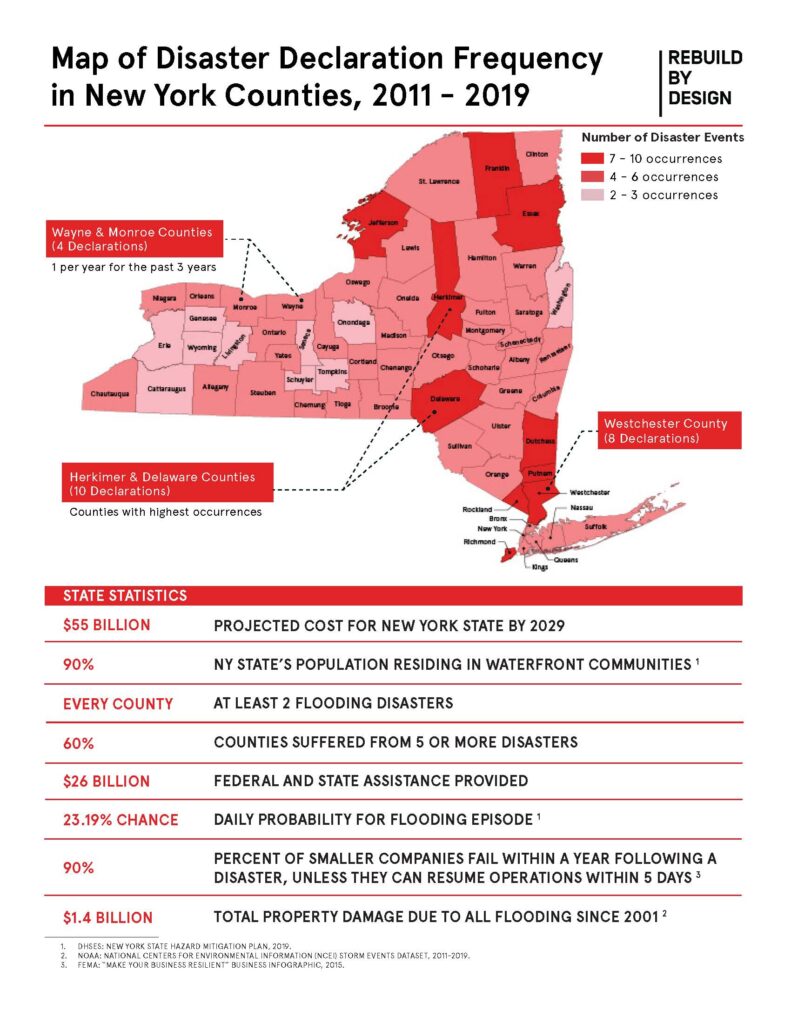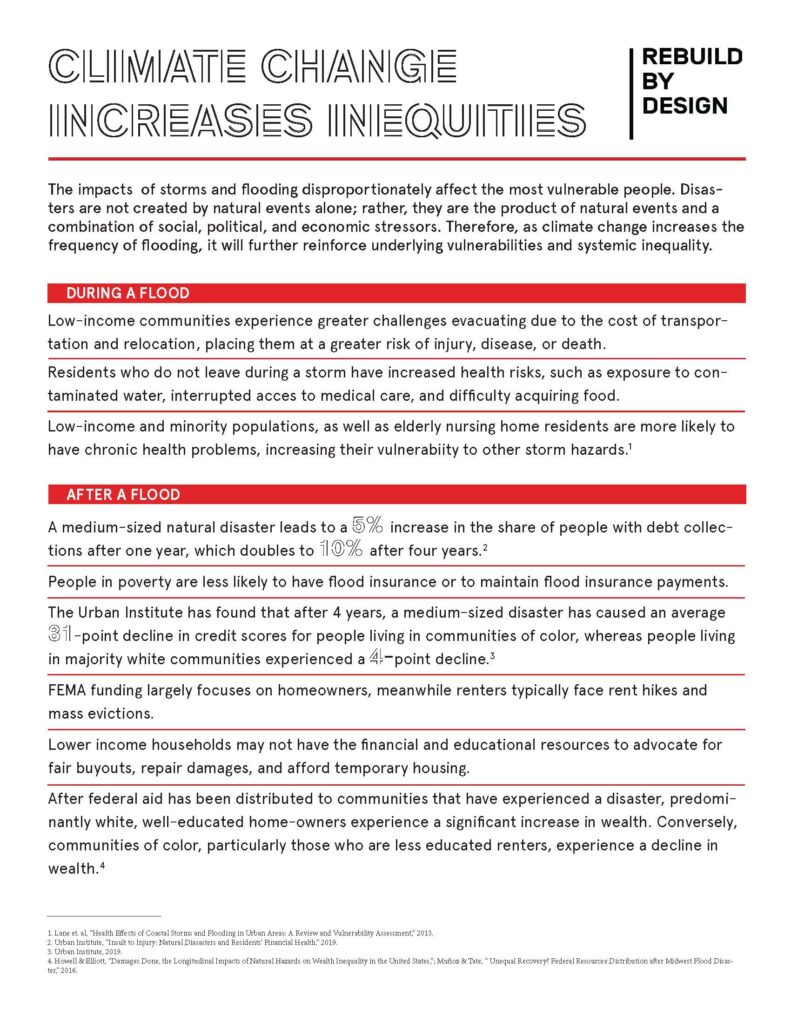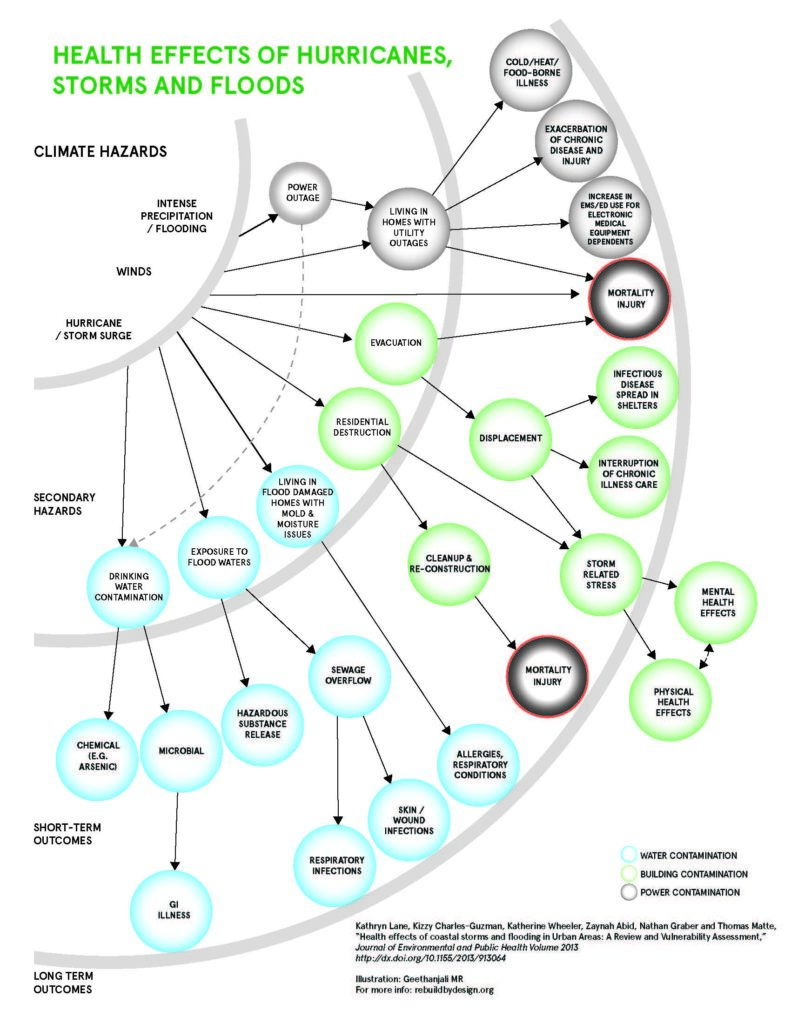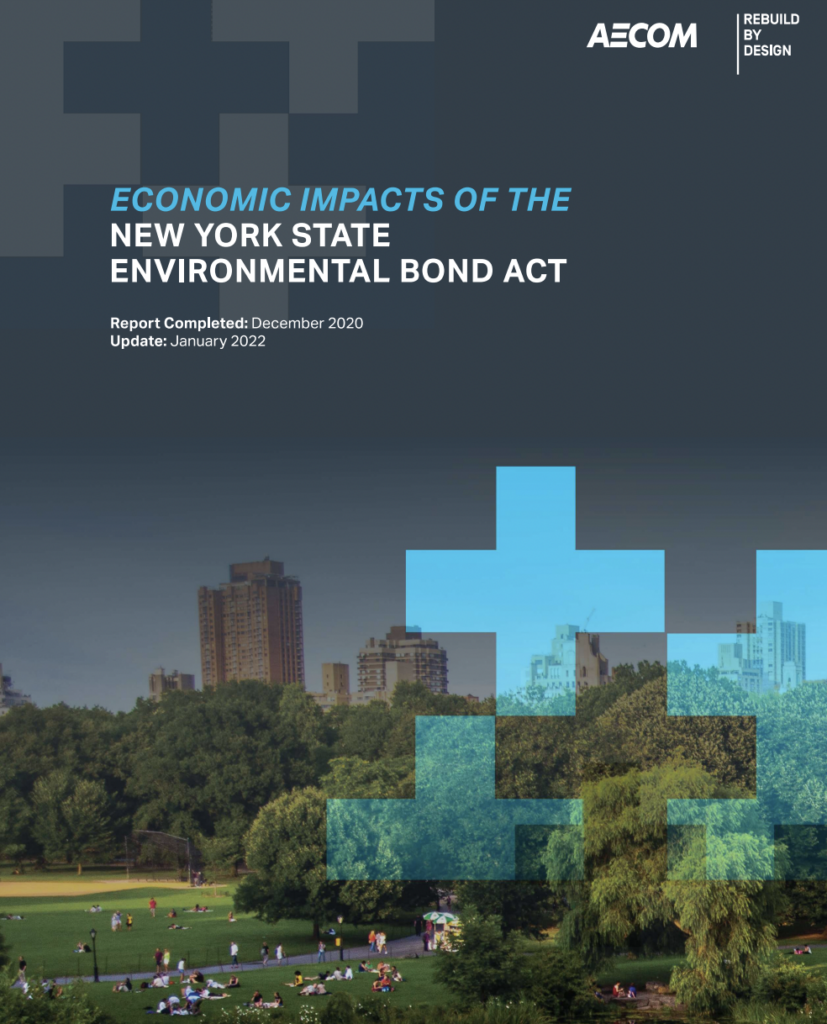COLLABORATIVE DESIGN: Applicants and co-applicants will demonstrate project feasibility and effectiveness, and create a cost benefit analysis that includes valuation of ecosystem services, GHG emissions reduction, improved social and economic equity, safety, monetize some of the long-term value that resilience creates such as future loss avoidance (insurance) and future cost avoidance (public and mental health). Applicants will also demonstrate strong stakeholder support for the initiative and identify any local and federal funds which could be leveraged. The end result will be a comprehensive vision with specific fundable projects, policies or initiatives.
New York State Environmental Bond Act 2022
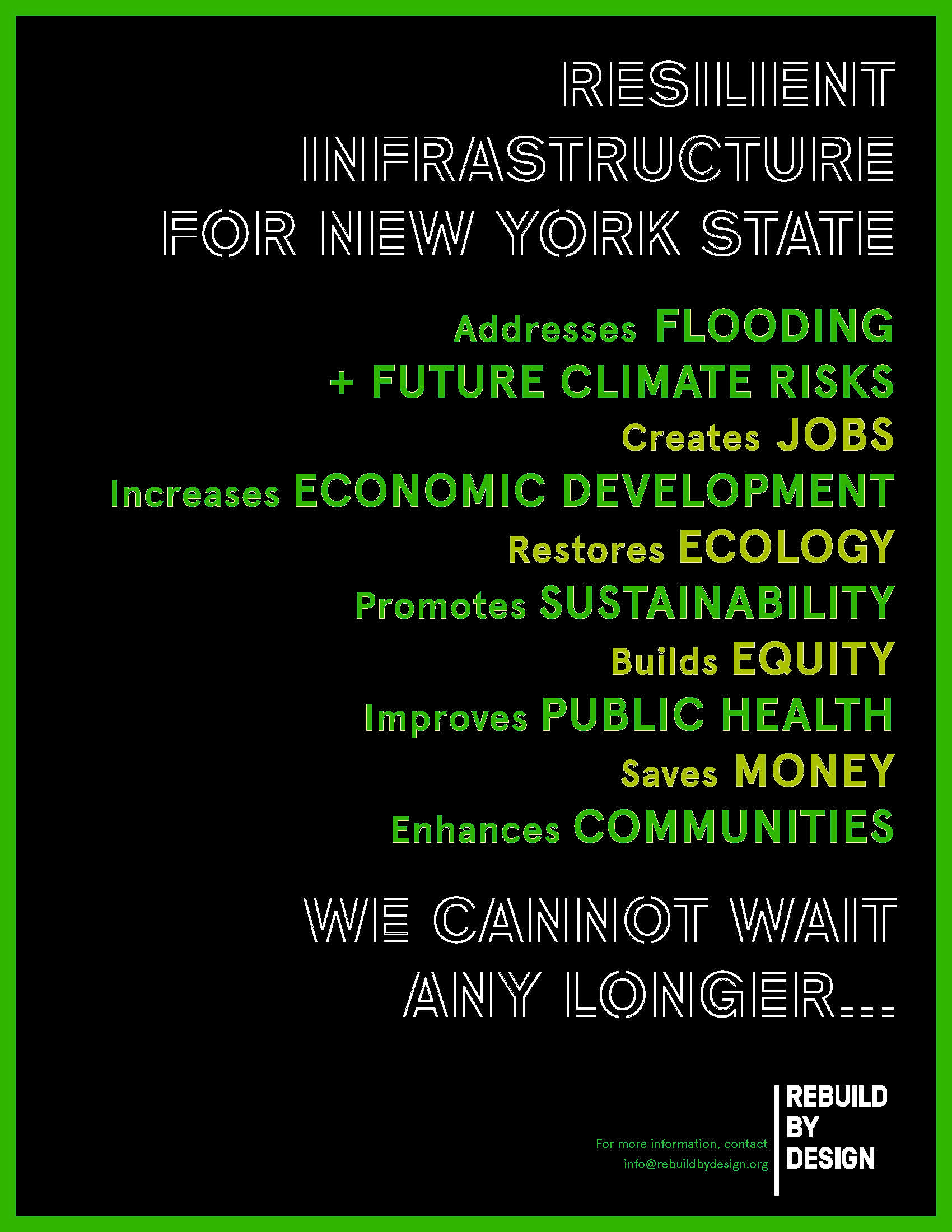
Ninety percent of New York State’s population resides in waterfront communities –along lakes, riverines, streams, or the ocean. What does that mean for New Yorkers?
Between 2011 and 2019, every county in New York State was impacted by severe storms and flooding, tropical storms, or hurricanes. More than half were affected by 5 or more disaster events. The major federal disaster declarations for these counties totaled $37.3 billion in federal aid for recovery efforts and is projected to be as much as $55 billion for the next decade.
The COVID-19 pandemic has laid bare the underlying inequities that make low-income communities and communities of color more vulnerable to shocks and stressors, such as public health crises, rising sea levels, and severe storms. As climate change magnifies these vulnerabilities, and the cost of recovery, the State will need to become more proactive in planning for climate change adaptation.
In 2019 and 2020, Rebuild by Design worked with a coalition of leaders representing various interests to alert the State of the growing need to confront the reality of climate change. In response to the coalition’s work, former Governor Cuomo and the New York State Legislature have passed the landmark $3 billion Environmental Bond Act in 2020 and 2021, which Governor Kathy Hochul raised to $4.2 billion.
The 2022 New York State Environmental Bond Act was approved by voters in New York State in November, 2022. See below for the allocation of these funds.
As New York faces a long and uncertain path toward economic recovery from the COVID-19 pandemic, Rebuild partnered with the leading infrastructure consulting firm AECOM to determine the economic impact of the proposed bond act. The findings from our report, Economic Impacts of the New York State Environmental Bond Act, estimate the bond act would support $8.7 billion in project spending and over 84,000 jobs.
In the 2020-2021 budget, the New York State legislature has appropriated the following amounts within the Bond Act (This information will be updated upon passage of the additional $1 Billion proposed in 2022):
$1.1 billion for Restoration and Flood Risk Reduction, including
- $250 million for a voluntary buyout program
- $100 million for coastal rehabilitation and shoreline protection
- $100 million for inland flooding and local waterfront revitalization
$650 million for Water Quality Improvement and Resilient Infrastructure, including
- $200 million for water infrastructure improvement act projects
- $250 million for municipal stormwater
$650 million for Open Space Conservation and Recreation, including
- $75 million for fish hatchery creation and upgrades
- $300 million for open space land conservation
- $150 farmland preservation
$1.5 billion for Climate Change Mitigation, including
- $400 million for green building projects
- $100 million for climate adaptation and mitigation projects
- $500 million for zero emission school buses and supporting infrastructure
- $200 million for air and water pollution elimination in EJ communities
$300 million for other projects
Our work is not done. As the threats from climate change increasingly impact New Yorkers, and new federal infrastructure funding becomes available, we need to:
1) Ensure the State invests in equitable long-term solutions to protect communities against climate-related flooding, and prepare our State for the future using the most up-to-date climate projections.
2) Help communities understand the costs and impacts of climate change already underway, and on the real and urgent need to limit additional climate change impacts.
3) Educate the public about the potential options and benefits ecological restoration and flood resilience will present for their individual households and communities as a whole, which include middle-class jobs, economic development, equity building, public health improvements, and more.
READ THE REPORT THAT LED TO THIS INVESTMENT >>
READ HOW THIS ACT WILL CREATE 84,000 JOBS HERE >>
OUR WORK CALLS FOR A COLLABORATION
The proposed NYS Resilient Infrastructure Fund, proposed in We Cannot Wait Any Longer, would be an inclusive program that will use bond act or insurance surcharge funding to incentivize regional planning to design and build infrastructure with multiple benefits to address physical and social vulnerabilities. This initiative will create and fund a roadmap of unique interventions– from the systems scale to the individual scale– statewide that can be implemented through this program. This program builds on the successes of Rebuild by Design and the National Disaster Resilience Competition models, and will incorporate the great work that has already been done in the State of New York while becoming a model for other states.
Like Rebuild by Design and the National Disaster Resilience Competition, there will be two-stages: (1) research, risk assessment and planning aka Collaborative Research; and (2) design and implementation aka Collaborative Design. Communities will be supported through this process by technical experts if requested by the llocality.
COLLABORATIVE RESEARCH: Ensure a community understand their specific risks, as well as the interdependencies of infrastructural, ecological and social systems that will be further affected by flooding. Communities will be encouraged to take a systems approach, for example, by addressing all the issues that arise from a full watershed, by protecting a highway from flooding through a crucial corridor, or by creating a buy-out program that identifies places for new investment. In addition to technical assistance, communities will have access to advisors in sectors such as climate science, hydrology, finance, design, community outreach, history, geography, geology, data processing, mapping etc. Universities located around the State can play this crucial role.
WILL YOU JOIN US?
Rebuild by Design’s 2020 Resilient Infrastructure Fund Advisory Board:
Associated General Contractors of New York State • Association of Towns of the State of New York • Building and Construction Trades Council of Greater New York • Construction Industry Council of Westchester and the Hudson Valley • Environmental Advocates of New York • Hudson Valley Economic Development Corporation • Long Island Builders Institute • Natural Resources Defense Council • New York Building Congress • New York League of Conservation Voters • Riverkeeper • Scenic Hudson • The Nature Conservancy • The Trust for Public Land
